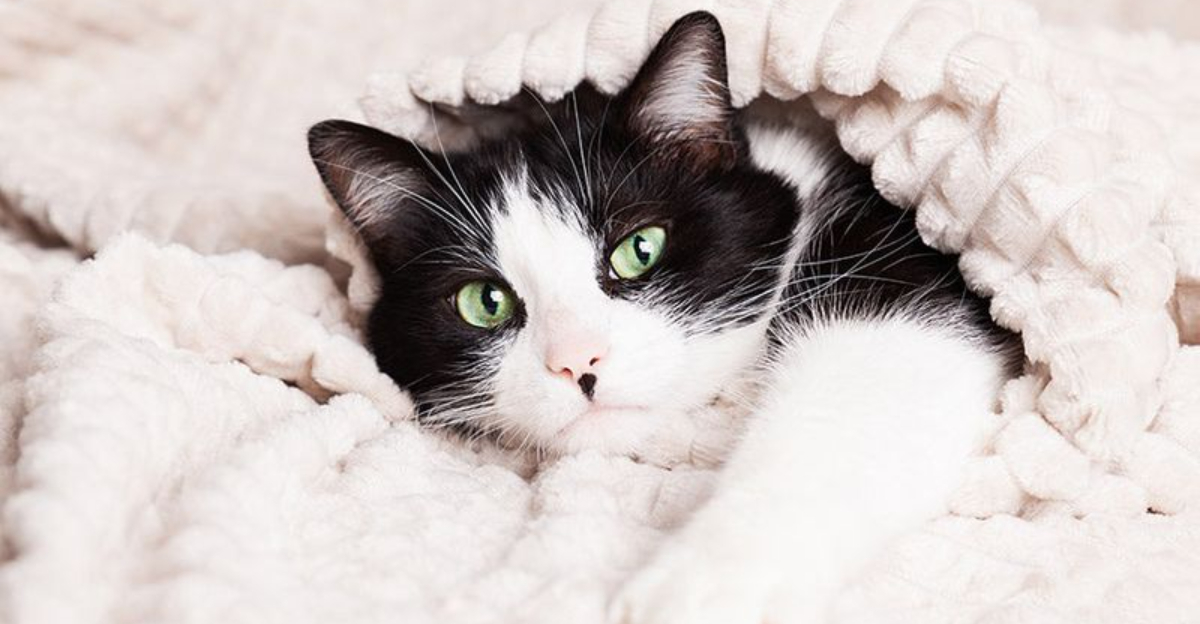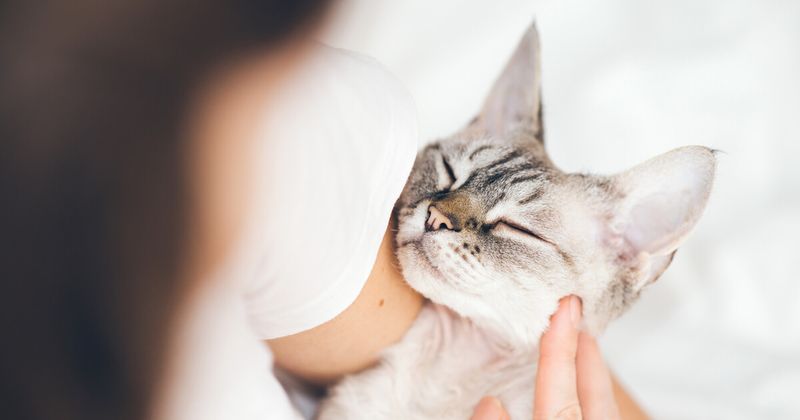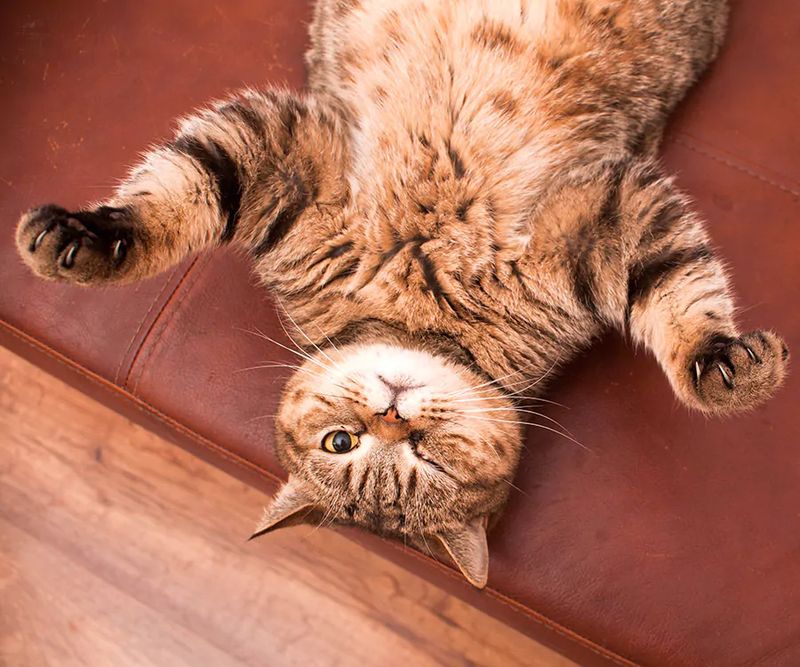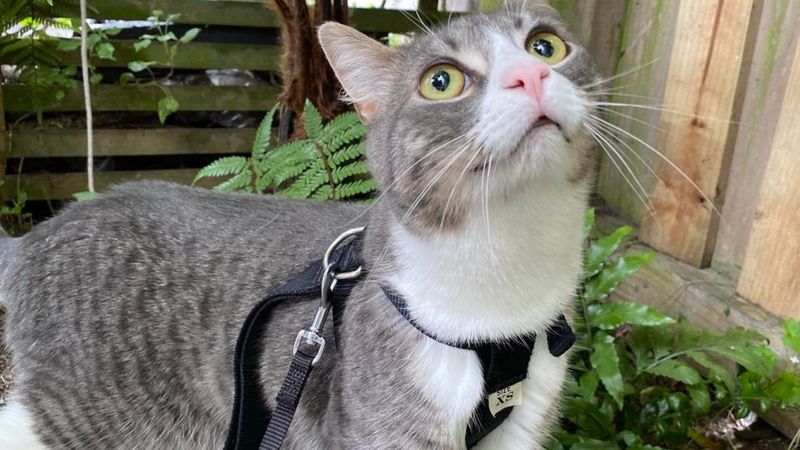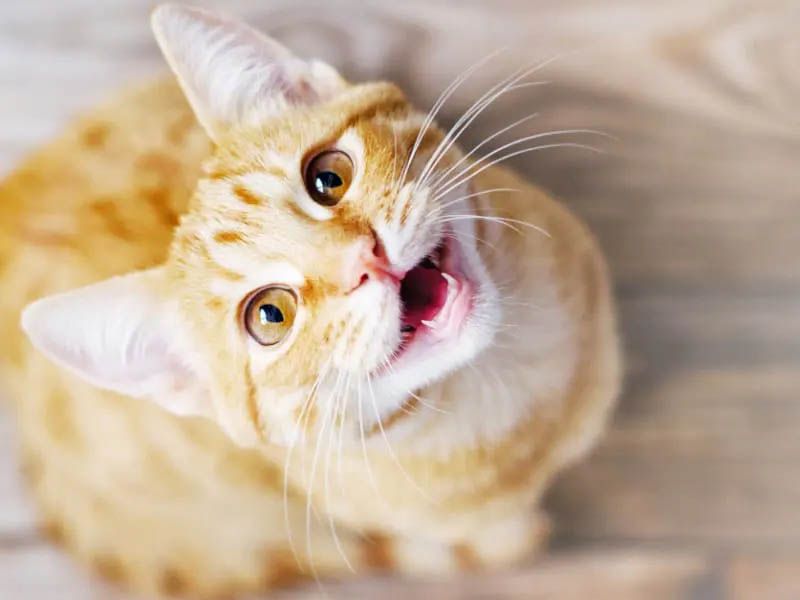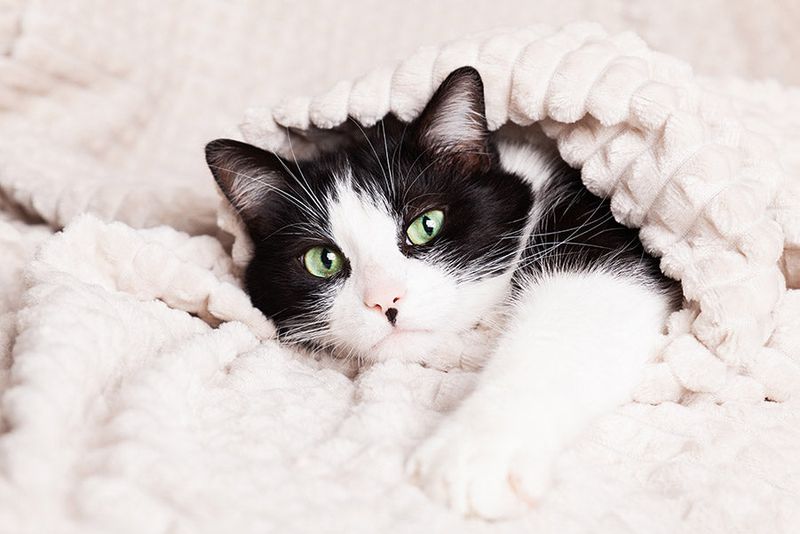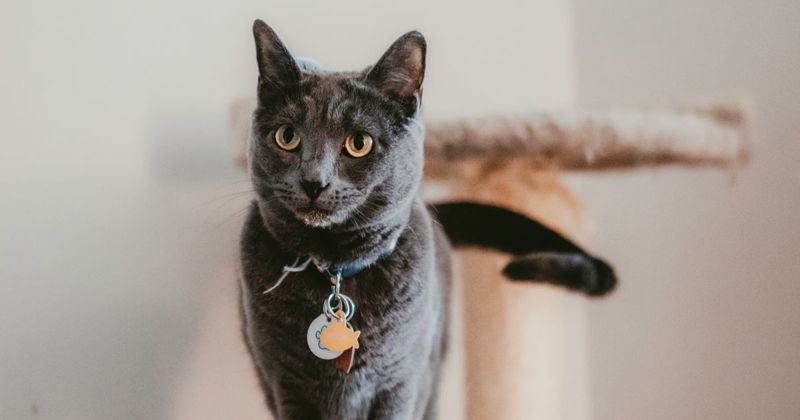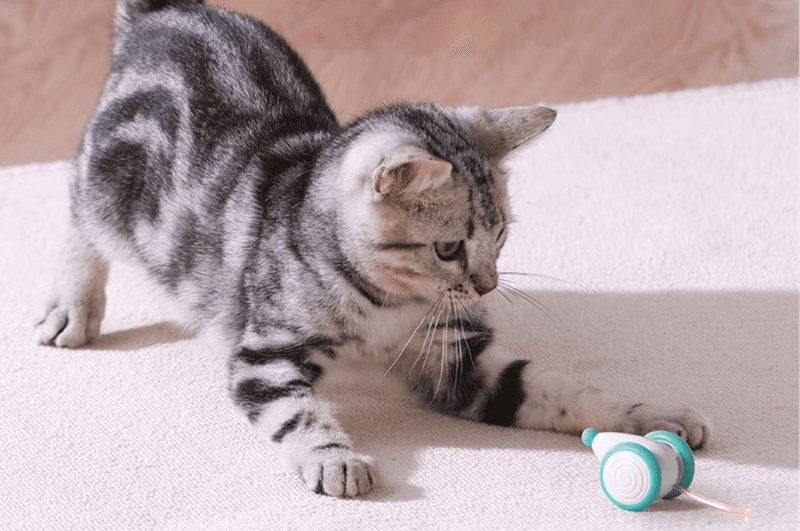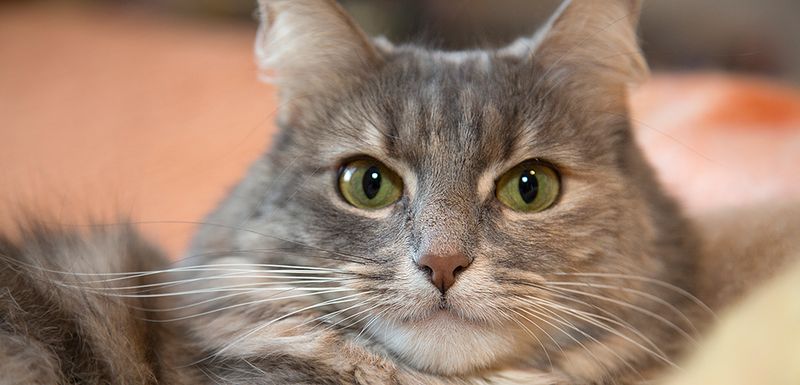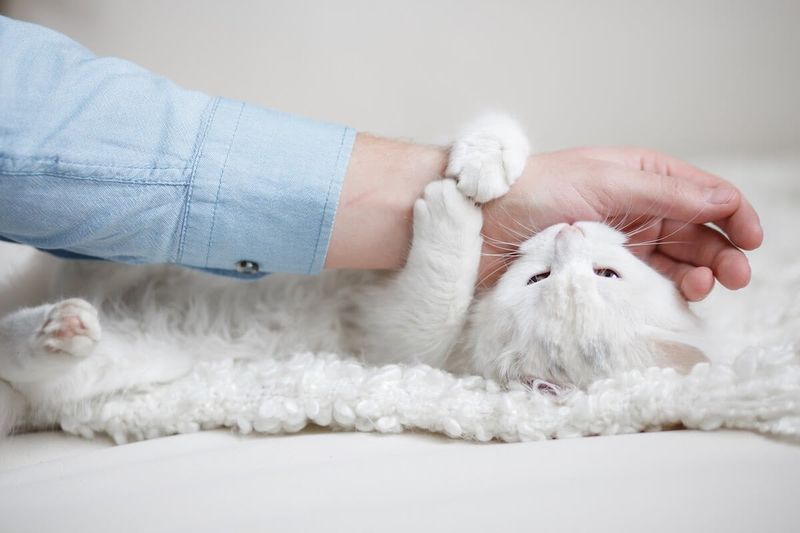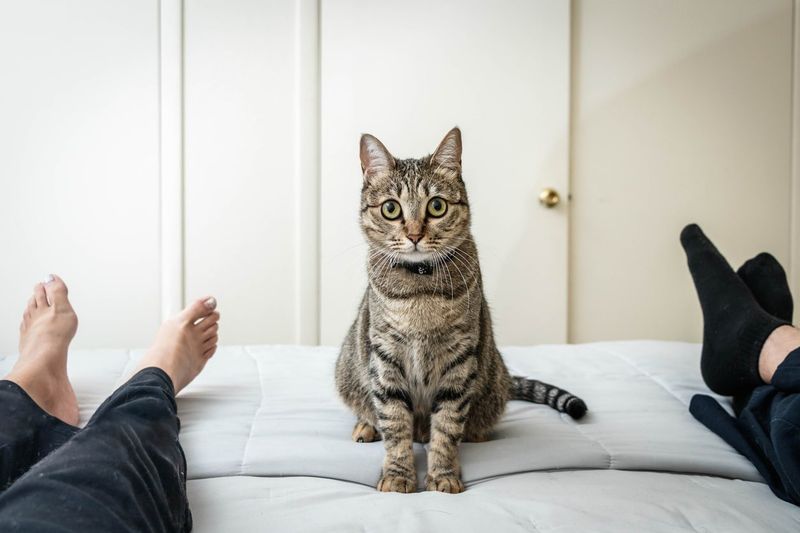📖 Table of Content:
- 1. Slow Blinks Sent Your Way
- 2. Belly Exposure While Resting
- 3. Following You From Room to Room
- 4. Greeting You at the Door
- 5. Kneading Your Lap or Blankets
- 6. Relaxed Posture in Your Presence
- 7. Bringing You “Gifts”
- 8. Soliciting Pets and Scratches
- 9. Purring While Being Handled
- 10. Sleeping Beside You at Night
Bringing a rescue cat into a new home marks the start of an important transition. Rescue cats often require additional time to adjust compared to those who have lived in a single environment. Feeling safe and secure with new people is a gradual process.
Trust is rebuilt through quiet, gentle interactions that may go unnoticed without careful attention. These small moments form the foundation of a strong bond between a cat and a human. Patience and understanding are key to recognizing progress.
Subtle behaviors can indicate that a rescue cat is beginning to accept their new surroundings and companions. Learning to read these signals helps support the cat’s emotional well-being. Over time, this growing trust leads to a meaningful and lasting relationship.
1. Slow Blinks Sent Your Way
Feline communication happens in the blink of an eye—literally! When your rescue cat gives you slow, deliberate blinks from across the room, they’re sending kitty kisses your way.
This gesture is incredibly meaningful in cat language. By closing their eyes in your presence, they’re showing they feel safe enough to be temporarily vulnerable around you.
Try returning this gesture by slowly blinking back. This simple exchange creates a special bond between you two. Many cat behaviorists consider this one of the first trust signals a formerly cautious cat will offer their human.
2. Belly Exposure While Resting
Rolling over to expose that fuzzy tummy is a massive vote of confidence from your rescue cat. The belly is a cat’s most vulnerable area, housing vital organs with minimal protection.
When your formerly skittish kitty sprawls out belly-up near you, they’re essentially saying, “I trust you won’t hurt me when I’m defenseless.” This doesn’t necessarily mean they want belly rubs—many cats still prefer their stomachs untouched.
Respect this boundary while appreciating the tremendous trust they’re showing. Simply being allowed to witness this vulnerable position represents enormous progress in your relationship.
3. Following You From Room to Room
Your feline shadow has arrived! When your rescue cat begins trailing behind you as you move through the house, it’s a heartwarming signal of growing attachment.
This behavior shows they’ve begun to see you as a source of safety and comfort rather than a potential threat. They’re curious about your activities and want to maintain proximity to their new trusted human.
Some cats may keep a respectful distance while following, perhaps watching from doorways. Others might stick closer to your heels. Either way, this curious companionship indicates they’re becoming invested in your daily movements and routines.
4. Greeting You at the Door
Coming home to find your rescue cat waiting by the door marks a significant milestone in your relationship. This welcoming behavior shows they’ve recognized you as someone worth anticipating.
Initially, many rescue cats hide when people enter their space. The shift to actively greeting you means they now associate your arrival with positive experiences rather than potential danger.
Their greeting style might be subtle—perhaps just sitting nearby watching—or more demonstrative with meows and leg rubs. However they express it, this acknowledgment of your return represents a beautiful evolution from their once-fearful state.
5. Kneading Your Lap or Blankets
Those rhythmic paw pushes—often called “making biscuits”—represent deep contentment in your rescue cat. Kneading behavior originates from kittenhood when cats pressed against their mother to stimulate milk flow.
When your rescue cat performs this nurturing ritual on your lap or nearby blankets, they’re expressing comfort and security. It’s a behavior reserved for situations where they feel completely at ease.
The fact that they’re comfortable enough to engage in this vulnerable, instinctive behavior around you speaks volumes. Their paws are telling you they associate you with the same safety they felt with their mother as kittens.
6. Relaxed Posture in Your Presence
Body language reveals everything about how your rescue cat truly feels. When that formerly tense, alert posture melts into relaxed lounging around you, they’re demonstrating newfound comfort in your presence.
Notice the subtle shifts: shoulders no longer hunched, tail loosely curved rather than tucked, ears in neutral position instead of swiveled for danger. These physical changes show their nervous system has downshifted from constant vigilance to peaceful coexistence.
Pay special attention to sleep positions. A cat who feels safe enough to drift into deep sleep near you, perhaps with legs stretched out or in curled-up loaf position, has granted you their highest form of trust.
7. Bringing You “Gifts”
Finding a toy mouse at your feet might not seem like much, but when it comes from your rescue cat, it represents a significant breakthrough. Cats who bring objects to their humans are displaying both trust and inclusion in their social group.
This behavior stems from their hunting instincts. By presenting you with toys (or occasionally less pleasant offerings like actual prey), they’re treating you as family who deserves to share in their accomplishments.
Some cats vocalize proudly during these gift-giving moments. The combination of bringing you objects and announcing it shows they’ve accepted you as someone worthy of their hunting prowess and caretaking instincts.
8. Soliciting Pets and Scratches
The first time your rescue cat deliberately approaches for physical affection marks a tremendous breakthrough. This proactive request for contact shows they’ve moved beyond merely tolerating your presence to actively seeking your touch.
Watch for the telltale signs: head butts against your hand, rubbing against your legs, or presenting their cheeks or chin for scratches. These behaviors aren’t just friendly—they’re your cat deliberately marking you with their scent glands, essentially claiming you as their own.
Respect their boundaries during these interactions. If they indicate they’ve had enough by moving away, honor that communication. This builds further trust that you’ll respect their consent.
9. Purring While Being Handled
That rumbling motor sound from your rescue cat’s chest during handling represents pure feline contentment. While cats sometimes purr when stressed, purring during gentle petting or being picked up typically signals genuine pleasure and trust.
For many rescue cats, allowing physical handling is a massive hurdle to overcome. Their previous experiences may have made the human touch feel threatening rather than comforting.
When your cat begins purring during these interactions, it’s confirmation they now associate your touch with positive feelings. The combination of allowing handling while expressing happiness through purring demonstrates they’ve developed significant confidence in your caregiving.
10. Sleeping Beside You at Night
The ultimate display of feline trust arrives when your rescue cat chooses to sleep beside you at night. Sleep represents their most vulnerable state, when they’re completely defenseless against potential threats.
Selecting your bed as their nighttime sanctuary means they’ve fully accepted you as safe, protective, and worthy of their complete vulnerability. Some cats might start at the foot of the bed, gradually moving closer as trust deepens.
This nighttime closeness also indicates they find comfort in your scent and presence. For a formerly fearful rescue cat to reach this level of trust is a profound achievement in your relationship and testament to the safe haven you’ve created.
